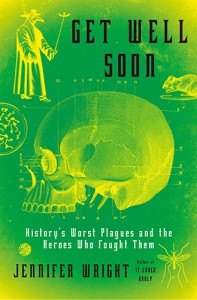
Bubonic Plague
(Everyone's favorite ;)
The Florentine Marchionne di Coppo Stefani said that the pits looked like lasagna.
It is incomprehensible to me the sheer amount of death this plague caused.
If the plague spread to the lungs and became pneumonic, it could be transmitted from person to person through an infected cough. The plague would kill somewhere between 20 and 50 million people in the fourteenth century, or approximately 30 percent of Europe’s population.
30 percent. 3. 0. percent. Reading this section I almost teared up, the lack of knowledge along with fear and society crumbling around you must have been horrific.
There are stories about how common it was for people to leave bread and water at a sick relative’s bedside, tell them they were going out to fetch supplies, and then abandoning them. The dying could be seen through the city plaintively rapping at their windows, hoping someone would come to ease their suffering.
******
De Mussis describes the streets ringing with the cries of dying children who had been locked out of their homes,
******
Second, no one wanted to force their children into the streets. No one wanted to leave them to die alone. They did so only because doing otherwise would doom them also.
When I think of world ending disasters, sickness is a big one (I blame The Stand) for me and think of how today's society would withstand this. The thing about this plague is how devastating psychologically it must have been.
Terror over the devastating disease and a lack of scientific knowledge, as well as some people’s truly evil tendency to prey upon people’s fears, resulted in safeguards that seem ludicrous today.
******
I realize that “Do No Harm” is the first rule of medicine, but “Don’t apply human shit to an open wound” seems like a good second one. Oh, and bloodletting didn’t help, either.
There will be no escaping poop in this book, will there? The author talks about cures banded about during the time, drinking urine, wine, and pus from the infected. Sign me up for wine! Again, because of the knowledge I have, it makes you want to scream at the people to simply practice hygiene but I guess thanks? to the bubonic plague (and shout-out to Nostradamus) I know that now. This section and plague seemed to focus more on society fear than structure.
Most people died within four days of exhibiting the first symptoms, and many died within twenty-four hours.
******
The 10 percent of those who recovered from the plague generally had robust and healthy immune system.
Here is where I wish the author had expanded, besides healthy immune systems, is there any known reason some survived or not, talking about genetic/dna wise? What about people who never contracted it? I would have liked more discussion on this aspect.
The World Health Organization reports that in 2013 there were 783 cases worldwide; 126 people died.
Fortunately, today the disease is generally treated with the antibiotic streptomycin and is curable so long as it is caught early.
Wasn't there someone in CO who got the bubonic plague a couple years ago? It is incredibly eerie to me that this still lingers around but knowing there is an antibiotic makes it better. I guess. The framework is obviously better now, if something like this hits again but (The Stand!) I can't help fear-mongering myself over it. Although, with my weak ass self, I'd be the first to go, you all have fun with the bodies in the street and the rape gangs.
Who's making Nostradamus'' magic rose pills for the group to try?
;)
No comments:
Post a Comment